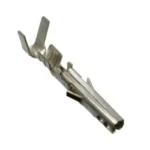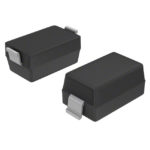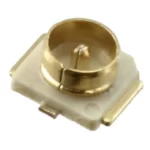Ceramic Capacitors – Get To Know Their Secrets
Ceramic Capacitors – Introduction
Ceramic capacitors are a type of electrical capacitor that uses ceramic dielectric material. They are used in filters, oscillators, resonators, and timing circuits that require stability over a wide range of temperatures.
Their electrical properties are determined by their physical structure. They have high leakage currents and high dielectric constants which give them greater tolerance for high frequencies.
Ceramic Capacitors – A Brief History
Ceramic capacitors are a special type of capacitor that is made up of ceramic material. They are used in a wide variety of electronic devices and circuits as they offer many advantages over other types of capacitors.
Ceramic capacitors were first developed in the 1920s, but they were not widely used until the 1960s when they became more affordable. Since then, their popularity has grown steadily and they are now widely used in all kinds of consumer electronics, from televisions and radios to computers and mobile phones.
Ceramic Capacitors – Design and Construction
A ceramic capacitor is made of a dielectric material, usually, ceramic oxide (aluminum oxide or barium titanate) sandwiched between two electrodes, which are usually made of metal. The dielectric acts as an insulator to separate the two electrodes and prevent them from touching each other.
To increase the capacitance value, a pair of plates with opposite polarities are joined together by a lead wire and placed in an insulating canister. The number of plates inside the canister determines the total capacitance value.
Ceramic capacitors come in various shapes and sizes, such as cylinders, discs, rectangular blocks, chip type (discs), or tapes (flat). Most ceramic capacitors have rated voltages up to 50 volts DC or 100 VAC at frequencies up to 1 MHz.
Ceramic Capacitors – Classification
Ceramic Capacitors – Class I
Class I ceramic capacitors are used for frequency stability and high energy storage requirements. These capacitors have a very high dielectric constant which makes them suitable for use in radio frequency applications, where they can be used as tuned circuits or chokes.
Ceramic Capacitors – Class II
Class II ceramic capacitors are used for bypassing and coupling applications, where they provide high voltage insulation between two circuits while maintaining low impedance at audio frequencies.
Ceramic Capacitors – Class III
Class III ceramic capacitors are also known as multiturn air-gap or varicap diodes. They are used for oscillator applications and are also used in the design of many electronic circuits such as phase-locked loops (PLLs), voltage-controlled oscillators (VCOs), frequency synthesizers, and other types of wireless communication devices that require accurate tuning capabilities.
Ceramic Capacitors – General Purpose Types
The majority of ceramic capacitors are general-purpose types. They are available in many different values and sizes, but not in the very high voltage or the very large values found in electrolytic capacitors. They are made in two basic shapes: rectangular and cylindrical. They come in both through-hole and surface mount styles.
General purpose ceramic capacitors with high stability and low losses are used in general-purpose applications where stability over temperature is required. They also offer a very high voltage rating and low leakage characteristics. These capacitors are useful for filtering out unwanted frequencies or noise from signals or DC power supplies or for tuning the frequency response of circuits.
Ceramic Capacitors – High-K Types
High-k ceramic capacitors are made of barium titanate and have very low ESR. They are suitable for use in high-frequency circuits because they have very low loss and high capacitance stability. These capacitors have very low equivalent series resistance (ESR) and very high dissipation factor (DF), which means they have very low loss and high ripple current capability. The higher the K value, the better these characteristics will be.
High-K types offer reduced temperature coefficients, high ripple current capacity, and low leakage currents. This makes them ideal for applications where the capacitor is used at high frequencies and/or subjected to large changes in temperature.
Ceramic Capacitors – MLCC Types
MLCC stands for multi-layer ceramic chip, which is a multi-layer assembly of electrodes that are stacked together with various dielectric materials to form a capacitor with good electrical properties such as high stability and reliability. Multilayer ceramic chip capacitors (MLCCs) are the most common type of capacitor used in electronics. They are also referred to as surface-mount capacitors, SMD capacitors, and chip capacitors.
Multilayer ceramic chip capacitors are made up of two or more layers of ceramic with a separation between these layers, which is filled with an electrolytic solution (electrolyte). The electrolytic solution stores the electric charge and transfers it from one terminal (electrode) to another.
Ceramic Capacitors – Chip Monolithic Types
Chip monolithic ceramic capacitors (chip capacitors) are made of a single piece of ceramic formed into the desired shape by sintering or hot pressing. Chip capacitors have low equivalent series resistance (ESR) and low leakage current. They are available in a wide range of values and shapes, including surface mount types.
A ceramic chip monolithic capacitor is a type of ceramic capacitor that has been developed to solve the problems associated with ceramic capacitors such as size and cost. Ceramic chip monolithic capacitors have the same quality and characteristics as traditional ceramics, but they are smaller in size, and cheaper than regular ceramic capacitors. However, there is no clear difference between the two types of capacitors in terms of performance, reliability, or safety when used properly.
Conclusion
The different types of ceramic capacitors depend on their purpose, the values that they have, their temperature range and when they are used. In fact, they come in so many shapes and sizes that you can choose the one that suits your purpose just fine.
Before buying any type of ceramic capacitor always pay attention to the voltage as well as get all the necessary details about it since this will help you make an informed decision.


